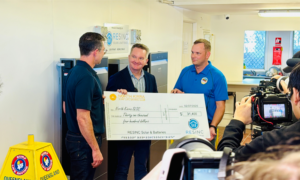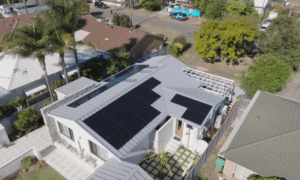Australia is set to accelerate research and development into alternative and renewable energy sources as outlined in the First Low Emissions Technology Statement – 2020.
The addition to the recently released Technology Investment Roadmap is a research and development strategy to help Australia plan for its energy future and reduce emissions through alternative technologies, Minister for Energy and Emissions Reduction Angus Taylor said.
“Existing, proven technologies like coal, gas, solar panels and wind will play important roles in Australia’s energy future, but are not the focus of the Roadmap,” he said.
He stated that investment in mature technologies like solar would continue, but the purpose of this Low Emissions Technology Statement was to focus on new and emerging technologies and encourage the private sector to invest in these new innovations as well.

How the Federal Government plans to boost new energy technologies
The Low Emissions Technology Statement outlines five different technologies to focus on and three key pillars on how to foster these new technologies and bring them to maturity. The five technologies are:
- Hydrogen: the statement outlines plans to bring the cost of production down to under $2 per kilogram. The CSIRO has previously stated in its National Hydrogen Roadmap that Australia needs a target production price of between $2-3 per kilogram to be able to compete with other exporting countries. This is expected to become a big focus in Perth where local company Infinite Blue Energy opened the Arrowsmith Hydrogen plant in 2020, the first of many green hydrogen projects.
- Improved battery storage: The goal is to invest in long-range battery solutions that will deliver between six and eight hours of energy at less than $100 per MWh which is expected to boost solar and wind power production and takeup.
- Reduced emissions in the production of building materials: Infrastructure will be a key component of resurrecting the economy in the coming years and that will require steel and aluminium which require coal to create. This statement outlines plans to minimise emissions using new technologies.
- Better CCS – CO₂ compression techniques: To prevent emissions being released into the atmosphere with improved transport and storage facilities a focus as well and;
- Reducing soil carbon measurement costs: this statement outlines an ambitious goal of reducing these costs by 90 per cent to help improve operations in agriculture.
And the three pillars the Federal Government will use to achieve these goals include:
- Accelerating technology through investment and incentives from research and development all the way through to pre-commercial deployment
- A legislative and regulatory reform package that will make it easier for the Government to invest in new technologies and;
- Collaboration with international trading partners
“Getting these technologies right will create jobs, and preserve and expand our energy-intensive export industries. We will beat our 2030 emissions reduction target, with a platform for future emissions reductions beyond the next decade,” Mr Taylor said.
The statement said results would be tabled in parliament annually.











































